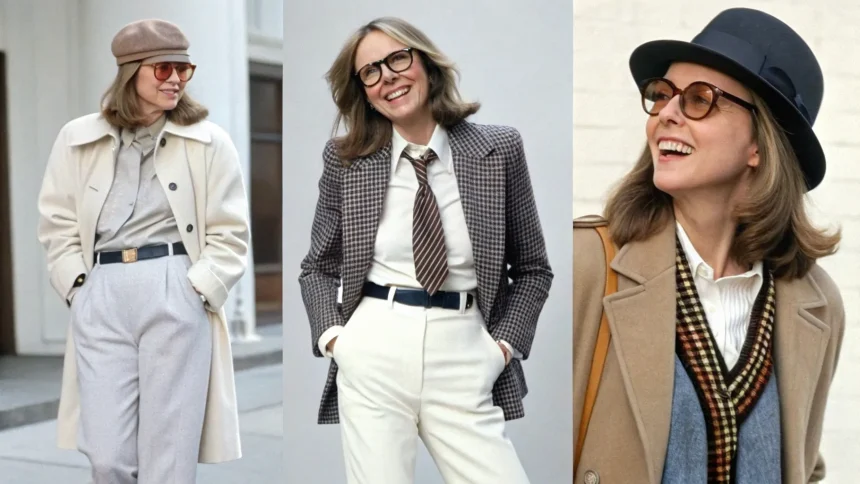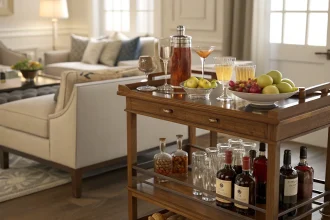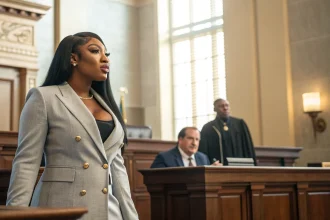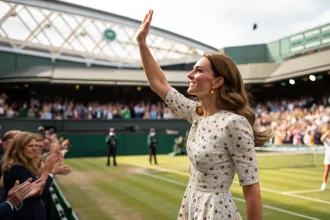Diane Keaton’s role in the 1977 film ‘Annie Hall’ catapulted her to fashion icon status, but her influence on women’s style has proven far more enduring and significant than a single character. Throughout her decades-long career, Keaton has consistently demonstrated how women can express their authentic selves through clothing at every stage of life.
The actress’s distinctive personal style—characterized by tailored menswear, high-waisted pants, hats, and an affinity for black and white—became instantly recognizable after her portrayal of the quirky, independent Annie Hall. However, what makes Keaton’s fashion impact particularly meaningful is how she has maintained her unique aesthetic while evolving it through different decades and life phases.
From Film Character to Fashion Phenomenon
When ‘Annie Hall’ hit theaters in the late 1970s, Keaton’s character broke conventional fashion rules for women. Her loose-fitting trousers, vests, ties, and oversized shirts challenged the more form-fitting styles popular at the time. What many viewers didn’t realize was that this wasn’t just a costume—it reflected Keaton’s actual wardrobe and personal taste.
Ruth La Ferla, fashion critic for The New York Times, once noted that Keaton “was one of the first women to make menswear genuinely sexy.” This androgynous approach to dressing wasn’t just visually striking—it represented a philosophy about comfort, practicality, and self-expression that resonated with women seeking alternatives to prescribed feminine styles.
Aging Gracefully in the Public Eye
Unlike many Hollywood figures who struggle with aging in a youth-obsessed industry, Keaton has embraced each new decade with confidence and style. Now in her 70s, she continues to appear on red carpets and in fashion campaigns, showing women that style doesn’t have an expiration date.
Her signature looks have evolved subtly over time while maintaining core elements: structured coats, turtlenecks, wide-legged pants, and statement accessories. This consistency demonstrates how personal style can become a form of self-knowledge and comfort.
Fashion designer Norma Kamali has praised Keaton’s approach: “She shows women how to dress for themselves rather than for others’ approval. That’s incredibly powerful at any age, but especially as you get older.”
The Intersection of Fashion and Identity
What distinguishes Keaton’s fashion influence is how clearly it connects to her personality and values. Her clothing choices reflect authenticity rather than trend-chasing—a quality that has made her style accessible and inspiring to women across generations.
This connection between fashion and identity has been evident throughout her career:
- Her preference for covering up rather than revealing
- Her loyalty to neutral colors that create a strong visual signature
- Her mixing of high-end designer pieces with affordable basics
- Her willingness to repeat outfits and keep clothes for decades
“I dress the way I feel comfortable,” Keaton once explained in an interview with InStyle magazine. “I never wanted to look like anyone else.”
A Modern Fashion Influence
In recent years, Keaton has found new audiences through social media, where her outfit posts gain thousands of likes and comments from followers of all ages. Fashion brands have taken notice too—she has appeared in campaigns for Chico’s and L’Oréal, representing women who refuse to become invisible as they age.
Her influence can be seen in the resurgence of high-waisted pants, oversized silhouettes, and menswear-inspired pieces in contemporary collections. Designers from Ralph Lauren to The Row have cited her as inspiration for their work.
While ‘Annie Hall’ may have introduced Diane Keaton as a style icon, her lasting impact comes from showing women how clothing can be both a form of self-expression and a source of confidence throughout life’s changes. In doing so, she has created a fashion legacy that goes far beyond a single iconic role.









